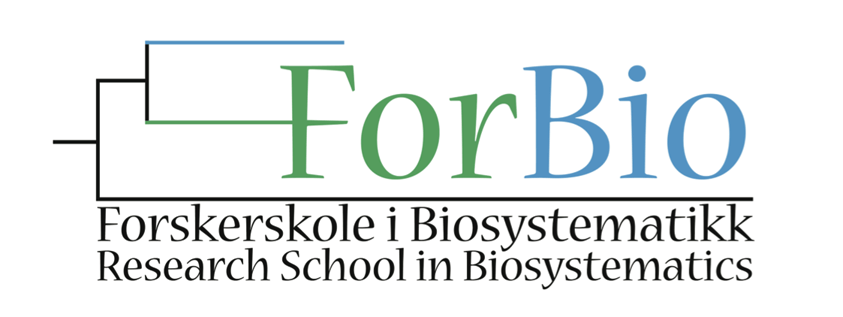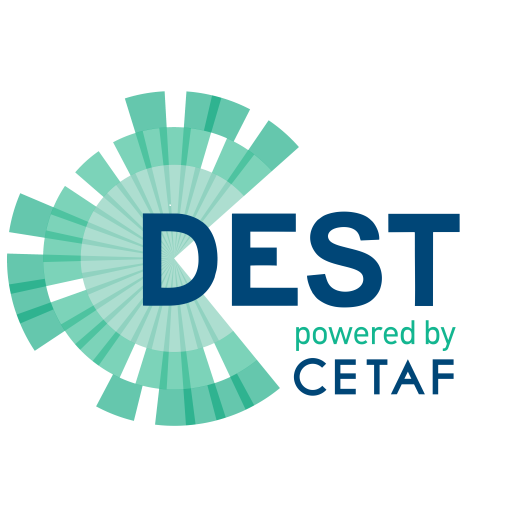Basics of Taxonomy 2022
![BASICS OF TAXONOMY PHOTO[37]](https://cetaf.org/dest/wp-content/uploads/2022/07/BASICS-OF-TAXONOMY-PHOTO37.png)
Date : 3-14 October 2022
Title
Basics of Taxonomy
Description
The course is structured in a sequence of five interlinked modules. Each module will start with an introductory lecture of approx. 1-3 hours. Then the remaining part of each module is typically divided between a short demonstration of a topic in order for the students to practise it, while next consecutive part starts with introduction and continues with “hands-on” working and exercises. The participants are also expected to give a short informal presentation (power point, 10 min plus 5 min questions) of their work and future plans for each other during the first four evenings of the course.
MODULE 1 – Scientific illustration
Participants will learn to understand the human perception of illustrations. They will be informed about a variety of illustration methods and will practise a limited number of these. Besides the illustration of biological specimens, specific technical aspects of diagrams, tables, typography, maps and posters will be included as well. Following topics will be covered:
– Theories behind the use of illustrations for various scientific purposes
– Human perception of illustrations
– Composition, colour theory, choice of illustration method
– Short history of scientific illustrations
– Aids like camera Lucida
– Black and white methods like copper graphics, charcoal, pencil and black ink
– Colour methods like watercolour, crayons, pastel, computer graphics and airbrush.
MODULE 2 – e-Taxonomy and biodiversity informatics tools
This module will provide an overview of the vision, history and future of e-taxonomy. It will develop the understudying of the participants of the landscape, key concepts and terminology in the field, the networks, services, tools and standards that make up the informatics assembly and the challenges associated with the design and management of this science infrastructure. Additionally, you become familiar with the key actors and platforms in the domain along with the samples of how biodiversity informatics incentivises and empowers scientist to use data in new and innovation.
On a practical level the module will set attainable scientific goals, which are going to be addressed using available online resources (e.g. GBIF data portal, Biodiversity Heritage Library, EoL traitBank) and open source analytical tools (e.g. R and R biodiversity specific libraries) to develop new taxonomic knowledge for specific geographic areas (e.g. specific taxonomic catalogues).
MODULE 3 – Digital drawing
Participants will learn to make scientific illustrations with the digital drawing method using the software program Adobe Illustrator. In many labs, this has become a standard method for making taxonomic descriptions, as there are great advantages in working speed, editing the illustrations and the ease of creating very smooth lines. The resulting vector graphics have very small file sizes, high resolution and they can be directly processed by most online journals. Photos and micrographs can be used as a master for making the line drawings. A solution for the illustration of complex details (like hairs or setae) will be offered by making libraries for these structures.
MODULE 3.5 – Stacking photography
Since this is not a whole day program it is not a module of its own. Participants will get an understanding of macrophotography and its implications in gear and different set-ups due to the needs. Understanding the limits and uses for stacking photography. How to edit in the computer programs like Zerene stacker and for example Affinity photo and Adobe Photoshop.
MODULE 4 – DELTA (DEscription Language for TAxonomy)
The introduction of this course will provide an overview of current international biodiversity aggregators, such as the Global Biodiversity Information Facility (www.gbif.org), the Ocean Biogeographic Information System (www.iobis.org), Tree of Life (tolweb.org) and GenBank (www.ncbi.nlm.nih.gov). Attention will be given to the Biodiversity Information Standards (developed by the Taxonomic Databases Working Group) which aim to improve efficient exchange of biodiversity data. Subsequently, the main part of this module will focus on learning to use the DELTA program. Participants will learn the basics of DELTA as well as the great potential of the program. DELTA is an advanced computer program developed by CSIRO (Commonwealth Scientific & Industrial Research Organisation, Australia) to handle all kinds of taxonomic data in the most optimal way. It is currently regarded as the state of the art tool in modern taxonomy and used by taxonomists to (re)describe taxa in a standardised format, which makes the information readily available for comparative (phylogenetic) studies, cataloguing of fauna lists and construction of interactive illustrated keys. Processing time and quality control of the data is being optimized by DELTA, as all data have to be treated in an identical manner. Participants are encouraged to bring species (or higher level) data (keys, illustrations and species descriptions) of their taxon of interest, which will be used to correctly build a database, construct interactive illustrated keys and generate natural language species descriptions.
MODULE 5 – Scientific writing and communication
Participants will learn the particularities of writing and presenting scientific studies. The main emphasis will be placed on writing the most common form of publication, i.e. the primary scientific paper. This module will explain the current structure of scientific literature, the main features of the scientific information ‘industry’, and the particular rules and customs followed by the international scientific community when publishing. Particular attention will be given to little taught aspects of the publication process, such as choosing a suitable forum for a scientific paper, practicalities of preparing and submitting a manuscript, dealing with editors and the printing process. Less emphasis will be placed on grammar and use of English, except for certain details of language use and style. The correct preparation of figures and tables for publication will be extensively discussed, as well as the different aspects of participating in international conferences (posters, talks, personal interactions).
Following main topics will be covered:
– The scientific literature: structure, purpose, prestige, types of publications
– How to write scientific papers: before you begin
– Basic decisions: what, how, when. Gathering intelligence about the unknown
– How to write the main parts of a scientific paper (IMRAD)
– Submitting a manuscript
– Stages to publication: what happens when and where?
– Other types of papers: posters
– Talks and scientific conferences: how to perform and participate?
Trainers
- DELTA: Dr Matz Berggren (senior researcher, Decapod Crustacea) Department of Marine Sciences, Göteborg University, Sweden and Dr Charles Oliver Coleman, Museum für Naturkunde, Berlin, Germany.
- Digital drawing: Dr Charles Oliver Coleman (Curator of Crustacea), Museum für Naturkunde, Berlin, Germany.
- Scientific illustration: Prof. Tomas Cedhagen (senior researcher, Associate Professor), Department of Bioscience, University of Aarhus, Denmark.
- e-Taxonomy and biodiversity informatics tools and workflows: Dr Dimitris N Koureas (Head of Department – Programme Director), International Biodiversity Infrastructure, Naturalis Biodiversity Center, Leiden, Netherlands
Dates of Training period
3 – 14 October 2022
Duration
11 days. About 88 hours (+ extra hours on the evening of second week if needed)
Location
Kristineberg Marine Research Station, Fiskebäckskil, Sweden
Course’s language
English
Target audience
PhD (late MSc and early PostDoc) students
Fee
600 euros/ trainee (it includes training and full boarding – accommodation and all meals)
Number of waivers/scholarships
ForBio – Research School in Biosystematics will provide course fee waivers for ForBio members based in Norway and Sweden. In order to apply for a waiver, you will need to indicate your ForBio membership in the registration form and provide your membership submission reference number.
Registration deadline
29 August 2022
Mode of trainees’ assessment
The trainees are expected to give a short informal presentation (power point, 10 min plus 5 min questions) of their work and future plans for each other during the first four evenings of the course.
Participant quota (min and max number of trainees)
Min 12 trainees – Max 18 trainees
Types of training/ Implementation method
- Theoretical modules/Face to Face
- Practical work/Face to Face
Training Course learning outcomes
- Deeper understanding how to plan, organize, write and successfully publish a scientific paper.
- Understanding of how illustrations and tables should be used and how the human perception works when looking at this type of information.
- Utilize the modern methods of digital illustration with the aid of a digitizer tablet and a computer program like Adobe Illustrator. Hands-on training on how to make a ready-to-publish illustration from a sketch or photo.
- Understanding of macrophotography, especially using stacking techniques and editing photos for best results.
- Learn and understand digital taxonomy and how to build own databases of selected taxa. Also, how to make written keys and natural language text descriptions from the database, publish interactive keys on the internet for common use and export data matrices into NEXUS format to import into different phylogenetic programs.
- Develop a good understanding of the challenges and opportunities around big data on biological diversity, the open source tools and freely available online services for making sense of the complex biodiversity data landscape, using concrete use cases.
Certifications provided
- Certificate of Attendance by CETAF DEST with 5 ECVET Units (European Credit system for Vocational Education and Training) and 5 ECTS Credits (European Credit Transfer and Accumulation System)
- Certificate by CETAF DEST according to Europass Certificate Supplement (certifying analytically the knowledge, skills and competences gained)
What trainees need to bring
- Laptop
- Digitizer board if they have one.
- A list of some program to download will be sent out before travel to the course if needed

